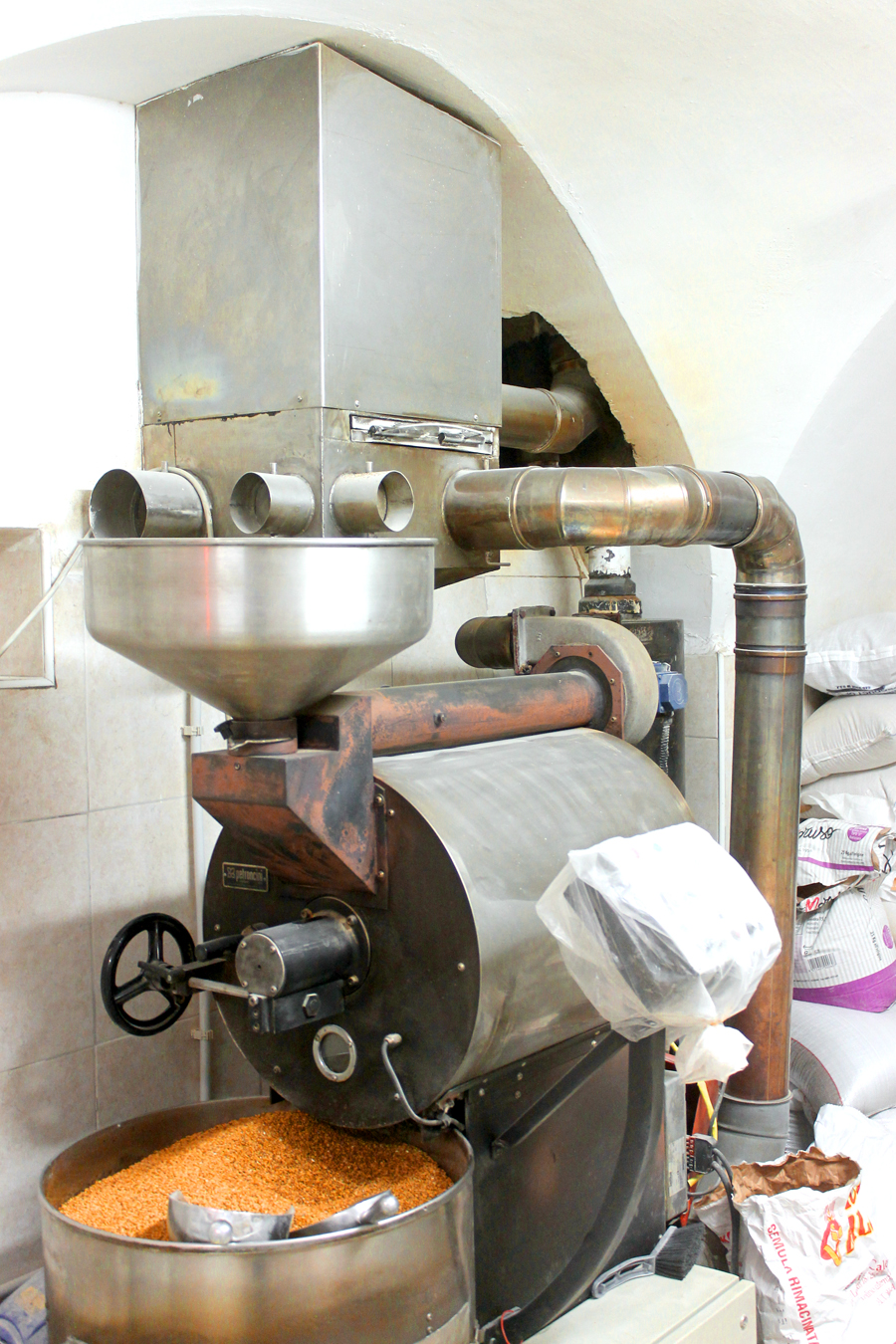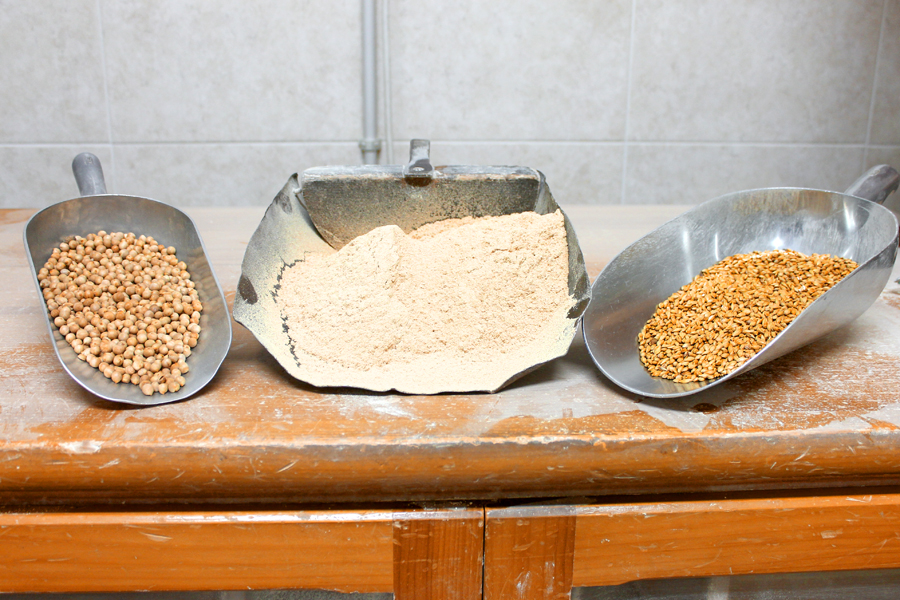 The production of farinella is still entrusted to the hands of local gastronomy artisans, who in small shops with a laboratory behind them, mill every day the quantity necessary for the sale of raw materials, in order to obtain a product that is always fresh.
The production of farinella is still entrusted to the hands of local gastronomy artisans, who in small shops with a laboratory behind them, mill every day the quantity necessary for the sale of raw materials, in order to obtain a product that is always fresh.The transformation phases are essentially two, roasting and milling. It is the right drying temperature and the correct balance in percentage of the ingredients, that is barley, chickpeas and salt, which allow to obtain a balanced product. The raw materials are stored in jute bags to preserve their organoleptic characteristics.
The roasting phase is done, always by hand, with a small machine for roasting cereals. Chickpeas and barley grains are roasted separately, because the temperatures and processing times are slightly different and it is the knowledge of these procedures that makes the recipe unique. It becomes important to let the right amount of moisture present in the beans evaporate with the temperatures. Having to have average timing and temperature references, it is possible to refer to about thirty minutes at 150 ° C.
 Milling is the phase that assembles the main components and crushes them together. The mix of grains crushed by the stone mill generates a thin beige-colored flour that expresses all its uniqueness combined with the typical dishes mentioned several times in these articles.
Milling is the phase that assembles the main components and crushes them together. The mix of grains crushed by the stone mill generates a thin beige-colored flour that expresses all its uniqueness combined with the typical dishes mentioned several times in these articles.
